Calorie Deficit Calculator and WebApp
The key to success in losing weight and keeping it off, is to burn more calories than you eat. There is a lot of mumbo jumbo about negative calories and various magical secrets and formulae for losing weight without reducing your calorie intake. Losing weight is simple - you need to eat less permanently, and exercise more often, to burn more calories as well. If you eat less calories than you burn or consume each day, your body has to break down fat to make up the difference. This means that you have to develop and maintain a Calorie Deficit to lose weight. Learn how to calculate it using simple tools and why it is important.
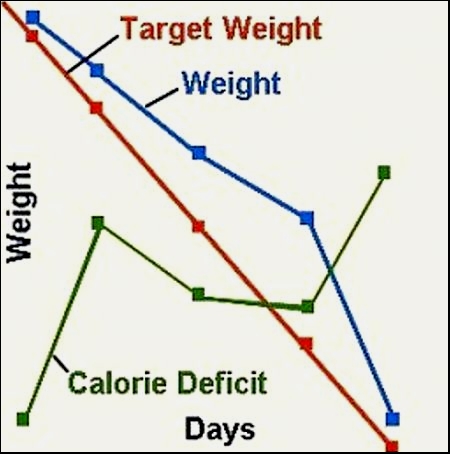
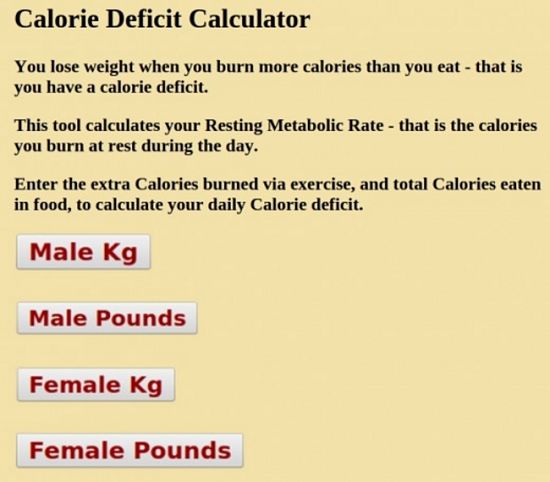
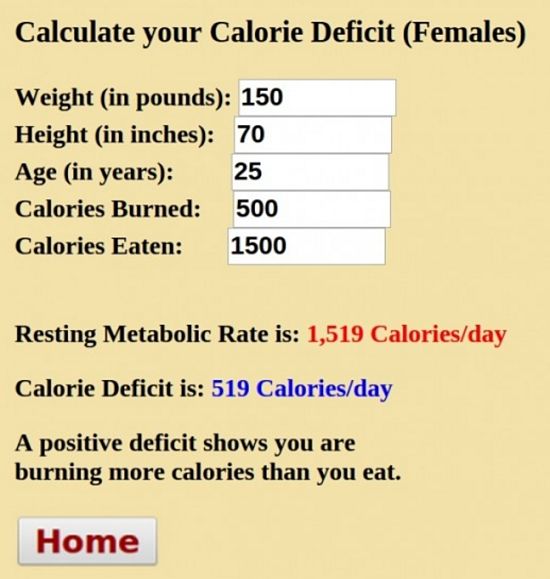
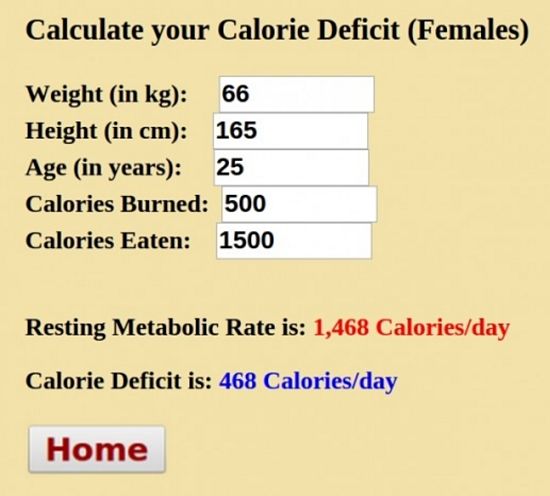
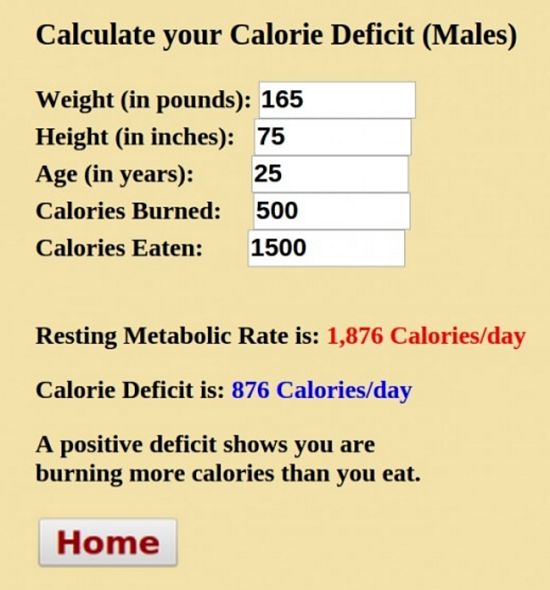
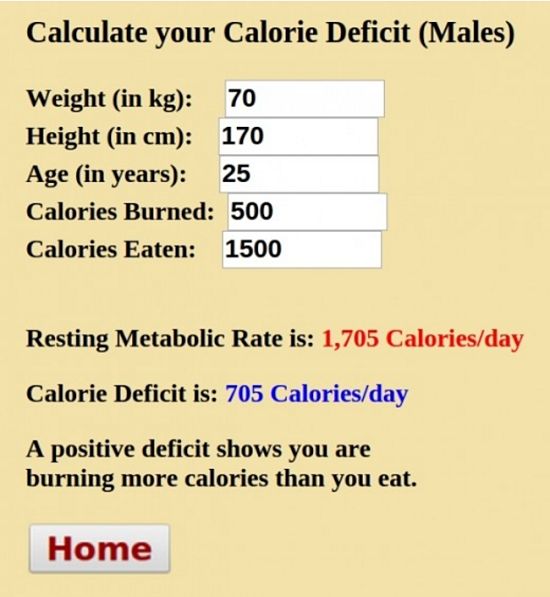
Losing Weight Similar to Managing a Credit Card
Losing Weight is similar to trying to manage your credit card balance, which is similar to your body fat.
- If you spend more using your credit card, than you pay off with deposits, your credit card balance will increase.
- If you pay off more, than you add with extra purchases, your credit card balance will decrease.
► Your credit card payment deficitis the amount by which your payments exceed your spending.
► Your calorie deficit is the amount by which the number of calories you burn or consume exceeds the number of calorie you eat.
Myth Busters about Dieting
There are a number of other key points and myths about dieting
► The concept of negative calorie foods is a myth. However, low calorie vegetable foods that are rich in fiber such as celery, lettuce and other foods have very few calories. These foods have low calorie density. They are bulky food, packed with fiber that fills you up. They have a low calorie count and it does take considerable time and energy to break them down in the gut. They act as an appetite suppressant. It is unlikely that the calories needed to process them exceeds their calorie content, but even if it does the differences are likely to be very small. Eating more of these foods, replacing calorie rich foods such as bread, snacks and cheese can help you reduce your calorie intake.
► Exercising to lose weight is a very hard road to tread, although it is widely promoted. Shown below is a summary of the calories burned in one hour for common activities. Also, shown are a list of foods and meals that contain an equivalent amount of calories to these activities. Some example will illustrate then point:
- Walking at moderate pace consumes 270 Calories for hour. This is equivalent to the calories is a serving of potatoes.
- Swimming laps, freestyle, at a slow pace for an hour consumes about 572 Calories. This is equivalent to the calories is a large serving of French Fries (large serving).
- Weight lifting or body building in the gym at a moderate vigor consumes about 490 Calories per hour. This is equivalent to a large serving of McFlurry with OREO Cookies.
The calorie deficit calculator shows that you can lose weight through exercise, but the effort and hours required are very demanding. It is far easier to reduce your calorie intake by 800-1000 calories a day by skipping one meal a day, or only eating the better half of each meal, than it is to pound the pavement for 2 hours to achieve the same calorie deficit. The best strategy is to do both - eat less food and exercise more often and at greater intensity.
Major studies have shown that most people consume about 500-800 more calories that people in the same societies consumed in the early 1970's. These extra calories consumed every day, mean that most people get fatter and fatter year by year. The important point is that this overeating is passive - that it it occurs because the food we eat today is far richer, because it is processed. There has also been a shift from unprocessed fruit and vegetables towards processed carbohydrates. But once again this is not a deliberate shift in diet, but a passive one driven by a change in what is 'normal' or 'acceptable', or simply peer pressure in the community to conform to social norms. People get fat eating 'normal' food and 'normal size portions'. But people don't realise that modern food is far too rich, so that doing the normal thing makes them fat.
The conclusion from this is that effective weight loss requires a permanent change of lifestyle involving both diet and exercise. Strategies such as intermittent fasting - 'Don't Eat Lunch', 'Skip one meal a day', or the '5:2 weekly fasting cycles', are designed to reduce total calorie intake.
Portion reduction strategies such as 'Only Eating the Better Half' can also work to reduce the amount of food consumed. They are permanent lifestyle changes.
Using these strategies there is no need to transition from a weird diet back to a 'normal' diet after losing weight, because in a sense the changes made are permanent.
If most people that consume 500-800 extra calories than they need each day could reduce their intake by a similar amount, and exercised more often to consume and extra 300-500 calories, they would gradually lose weight and transition to a new equilibrium weight, lower than their current weight. So the lifestyle change in diet and eating patterns is a permanent one.
Conclusion
This is what the calorie deficit tool is designed to do. To establish a new calorie consumption and intake regime for a lower body weight. It can be used to guide your lifestyle change from the dieting phase to the new equilibrium phase.
Tools which track your weight changes and your daily calorie deficit are a good idea because they keep you on the plan and they allow you to make adjustments. The calculations and the information you enter about calories burned and eaten may not be very accurate. In a sense these monitoring tools can become a 'scare graph'. If you stop losing weight then it is time to eat fewer calories or burn more through exercise, to get you back on track. The best tracking tools allow you to set a target daily or weekly loss rate. You can then compare your target weight and actual weight and make the necessary adjustments.List of Calories Burned Exercising for ONE HOUR for Common Activities, with Food Equivalents.
Aerobics, general - 531 Calories
=> Food Equivalent: Large serving of Fried Rice
Aerobics, high impact - 572 Calories
=> Food Equivalent: McDonald's Big Mac
Aerobics, step aerobics - 695 Calories
=> Food Equivalent: McDonald's Double Quarter Pounder with Cheese
Cleaning, dusting - 204 Calories
=> Food Equivalent: Steak (3 oz)
Cycling, <10 mph, leisurely - 327 Calories
=> Food Equivalent: Cheeseburger
Cycling, 12-13.9 mph, moderate - 654 Calories
=> Food Equivalent: Sonic Vanilla Malt - Large (20oz)
Cycling, 14-15.9 mph, vigorous - 817 Calories
=> Food Equivalent: Subway Double Meatball Marinara
Gardening, general - 327 Calories
=> Food Equivalent: Buttermilk Biscuit
General cleaning - 286 Calories
=> Food Equivalent: Scrambled Eggs
Golf, walking and carrying clubs - 368 Calories
=> Food Equivalent: Chile Fries (medium serving)
Orienteering - 735 Calories
=> Food Equivalent: Burger King WHOPPER Sandwich with Cheese
Roller blading, in-line skating - 981 Calories
=> Food Equivalent: Burger King DOUBLE WHOPPER Sandwich with Cheese
Rowing machine, moderate - 572 Calories
=> Food Equivalent: Frozen yogurt 2 cups
Rowing machine, vigorous - 695 Calories
=> Food Equivalent: Sonic Strawberry Shake - Large (20oz)
Running, 5 mph (12 minute mile) - 654 Calories
=> Food Equivalent: Carl's Jr. Strawberry Shake
Running, 5.2 mph (11.5 minute mile) - 735 Calories
=> Food Equivalent: Carl's Jr. Strawberry Malt
Running, 8 mph (7.5 min mile) - 1103 Calories
=> Food Equivalent: McDonald's Deluxe Breakfast (Large Size Biscuit) w/o Syrup & Margarine
Running, 10 mph (6 min mile) - 1308 Calories
=> Food Equivalent: Hardee's Double Bacon Cheese Thickburger
Swimming laps, freestyle, fast - 817 Calories
=> Food Equivalent: Carl's Jr. Philly Cheesesteak Burger
Swimming laps, freestyle, slow - 572 Calories
=> Food Equivalent: French Fries (large serving)
Tennis, doubles - 490 Calories
=> Food Equivalent: Sausage McMuffin (w/ Egg)
Tennis, singles - 654 Calories
=> Food Equivalent: Steak (7 oz)
Walking 2.0 mph, slow - 204 Calories
=> Food Equivalent: Potato Chips (handful)
Walking 3.0 mph, moderate - 270 Calories
=> Food Equivalent: Serving of Mashed Potatoes
Walking 3.5 mph, brisk pace - 311 Calories
=> Food Equivalent: Serving of Spaghetti with Sauce
Walking 4.0 mph, very brisk - 409 Calories
=> Food Equivalent: Filet-O-Fish Burger
Walking the dog - 245 Calories
=> Food Equivalent: Serving of Macaroni and Cheese
Weight lifting, body building, vigorous - 490 Calories
=> Food Equivalent: McFlurry with OREO Cookies
Weight lifting, light workout - 245 Calories
=> Food Equivalent: Serving of Chocolate Cake